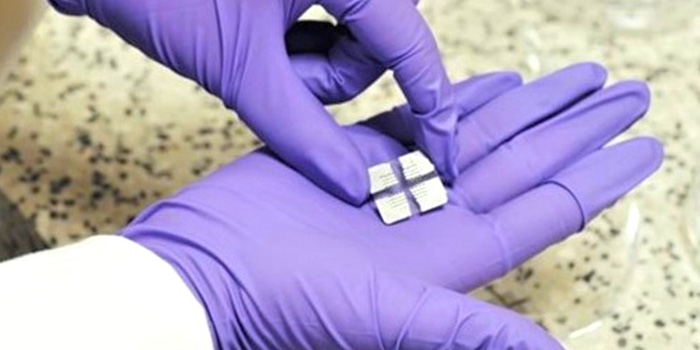While it is not quite ready for release, scientists have developed a “smart patch” device they claim can detect neurodegenerative diseases like Alzheimer’s and Parkinson’s within minutes.
A Point-of-Care testing kit to facilitate early diagnosis and monitoring of disease progression in primary clinics or home settings is being headed by Dr. Sanjiv Sharma with a consortium of leading scientists from Swansea University, Imperial College London and The University of Glasgow.
Additionally, Dr Kaori Tsukakoshi will steer researchers in Japan with Tokyo University of Agriculture & Technology and National Institutes for Quantum Science & Technology.
Current Alzheimer’s detection methods like blood or saliva-based tests are a “moment in time test” whereas, using a smart patch, doctors can continuously monitor molecules and biomarkers in a minimally invasive way. The initial results are available in six minutes.
A smart patch uses tiny needles (microneedles) placed on the arm or stomach to just barely break the patient’s skin barrier much like a nicotine patch.
This methodology allows doctors to be aware of the disease indicators before physical symptoms of the disease emerge. This innovative approach enables minimally invasive and real-time monitoring of biomarkers in the interstitial fluid of the central nervous system, offering new avenues for disease diagnosis, progression tracking, and treatment evaluation.
Microneedles are microscopic devices with lengths typically ranging from hundreds of micrometers to a few millimeters. These needles can be solid or hollow and are designed to penetrate the skin painlessly and reach the underlying tissue layers.
Advancements in microneedle technology have led to the development of wearable devices that can be easily integrated into daily life. These wearable microneedle patches can be applied to the skin like regular band-aids.
The smart patch does not extract or collect anything from the skin. The patch constantly monitors the skin and can send data to a computer to provide the results. It does this when biomarker molecules attach themselves to molecular-imprinted polymers which are then monitored electronically or optically.
There is still no cure of these types of diseases, but tools like the smart patch can allow patients to get an early diagnosis and benefit more from potential treatments and strategic planning for possible future incapacity issues.
Currently, the only way to confirm the presence of Alzheimer’s is when the patient is dead and, in an autopsy, find protein plaques in the brain.
In time these tools may be in every doctor’s office. Some experts caution, however, that it should not be the only thing used to diagnose Alzheimer’s. Nevertheless, Microneedle technology offers a revolutionary approach to monitor signs of neurodegeneration.

